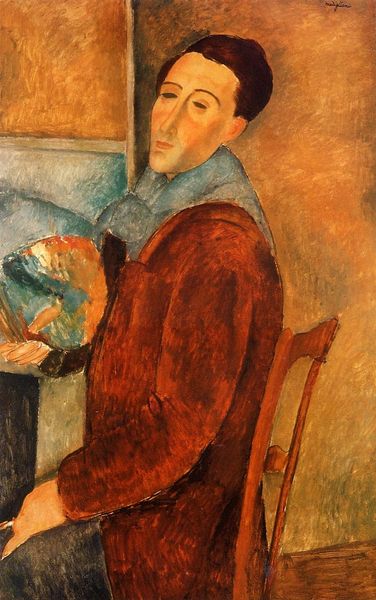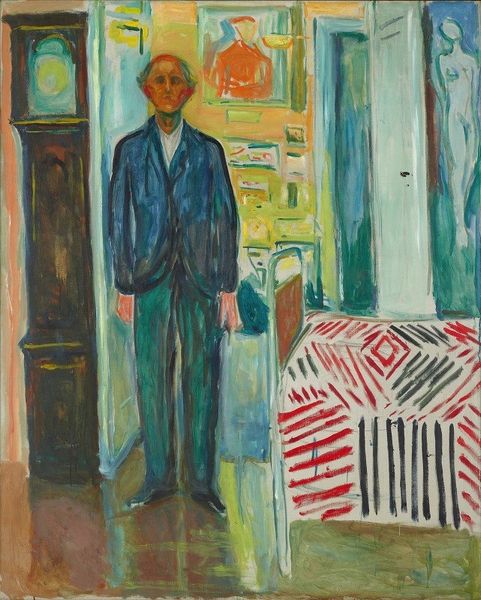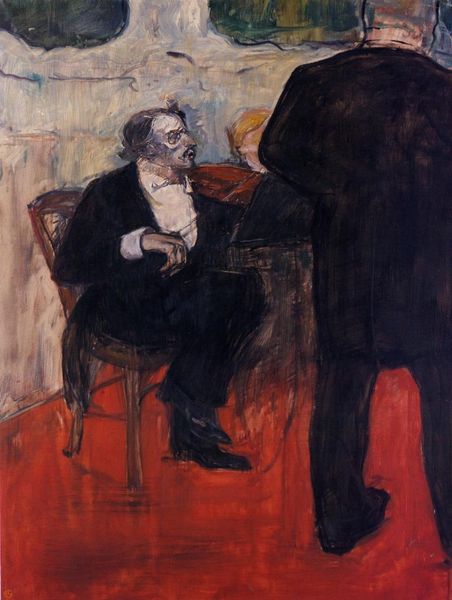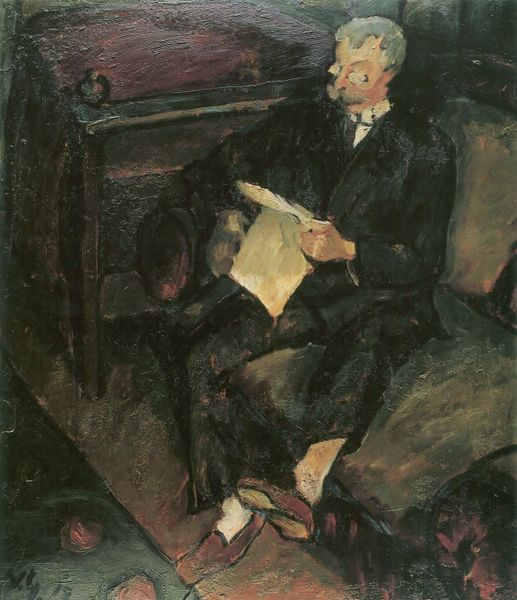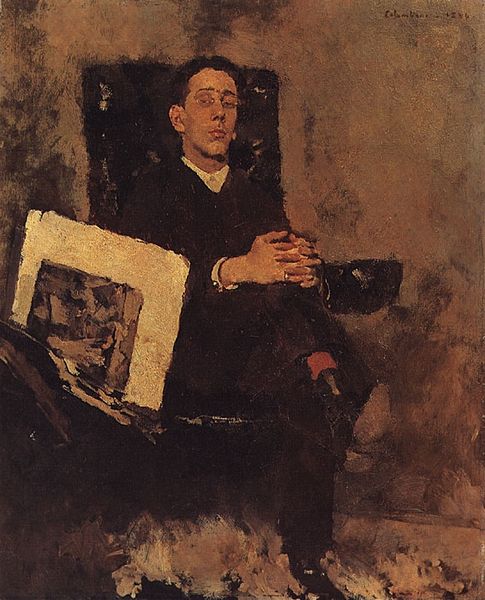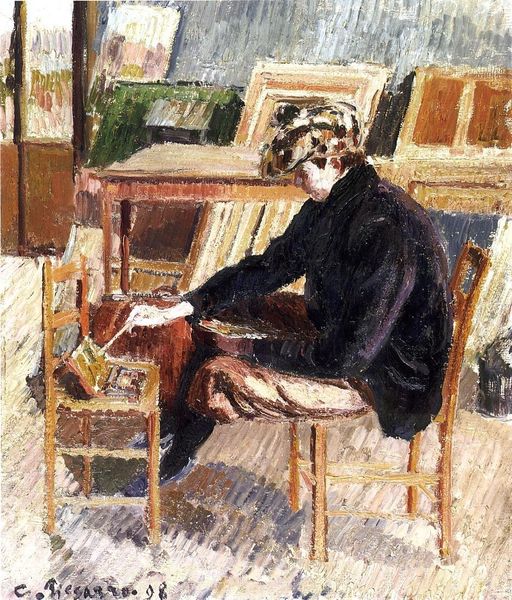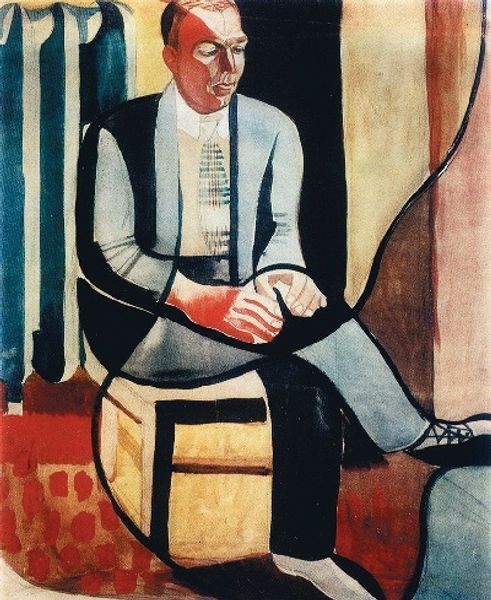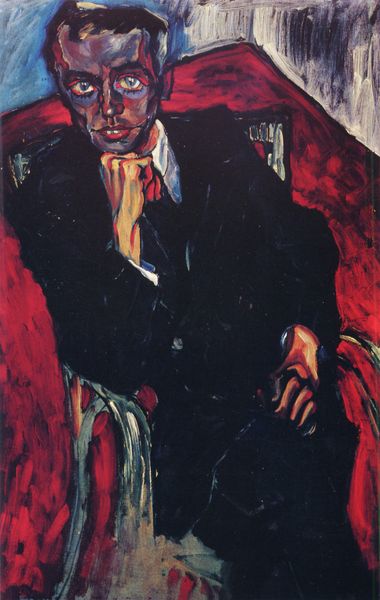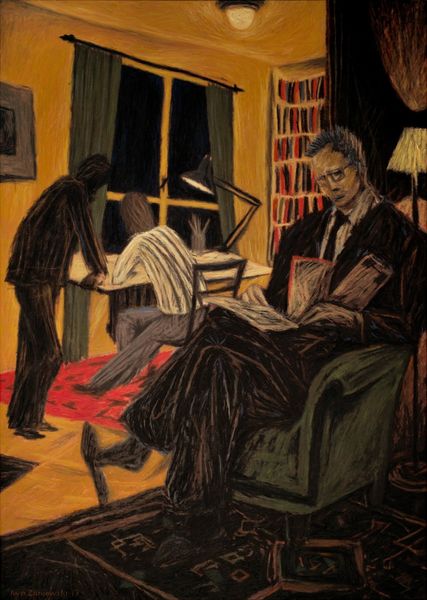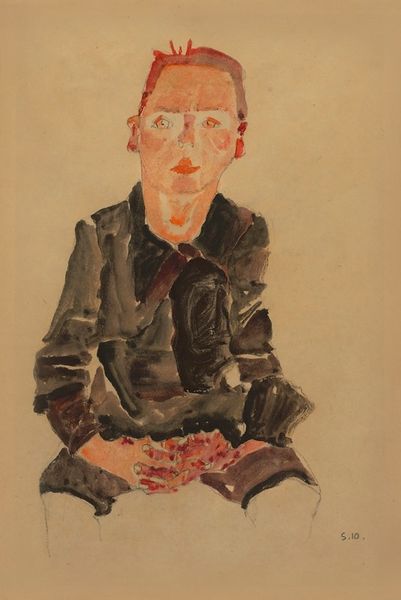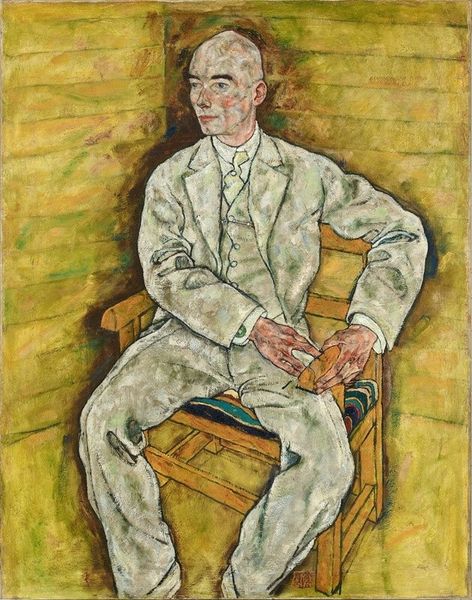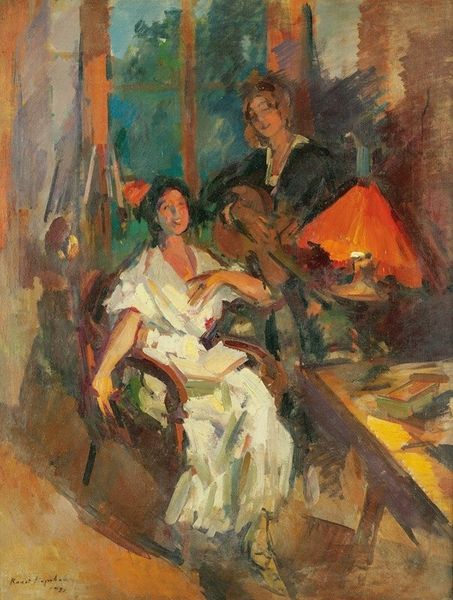
oil-paint
#
portrait
#
self-portrait
#
oil-paint
#
german-expressionism
#
oil painting
#
neo expressionist
#
expressionism
#
history-painting
#
portrait art
#
modernism
#
expressionist
Dimensions: 150.5 x 131 cm
Copyright: Public domain
Curator: Here we have Edvard Munch's "Self-Portrait after the Spanish Influenza," painted in 1919 and currently housed at the National Gallery in Oslo. Editor: My initial impression is one of unease. The sickly palette and the figure’s vacant stare are quite unsettling. Curator: The application of oil paint is notably thick and unrestrained. You can really see the artist’s hand and the energy in the brushstrokes, conveying a raw emotional state. Munch himself was grappling with the aftermath of illness when this piece was created. Editor: It's hard to ignore the color scheme—that pervasive reddish-orange. Is that indicative of a feverish flush or something deeper? Curator: Well, consider that period and the impact of the influenza pandemic on society. So much production was affected, and trauma influenced the culture on many levels. Editor: Yes, but on a compositional level, that fiery backdrop seems to push the figure forward. His formal dress is rather juxtaposed to the palette, while he seems somehow both present and absent simultaneously. Curator: He appears drained. It invites a question about artistic labor too, the human effort required to create. His tools—brush, palette—they're instruments of healing as much as creation, suggesting recovery. Editor: Interesting. The loose forms create an undeniable feeling of tension, as well. It captures a particular moment, reflecting perhaps, not just physical recovery but the social trauma surrounding such a major outbreak. Curator: Ultimately, it shows the interconnection between the personal and societal effects, and invites thinking beyond this painting into today’s processes too. Editor: Exactly. The stark simplicity combined with symbolic depth creates a very haunting experience that stays with you long after you’ve moved on.
Comments
No comments
Be the first to comment and join the conversation on the ultimate creative platform.
